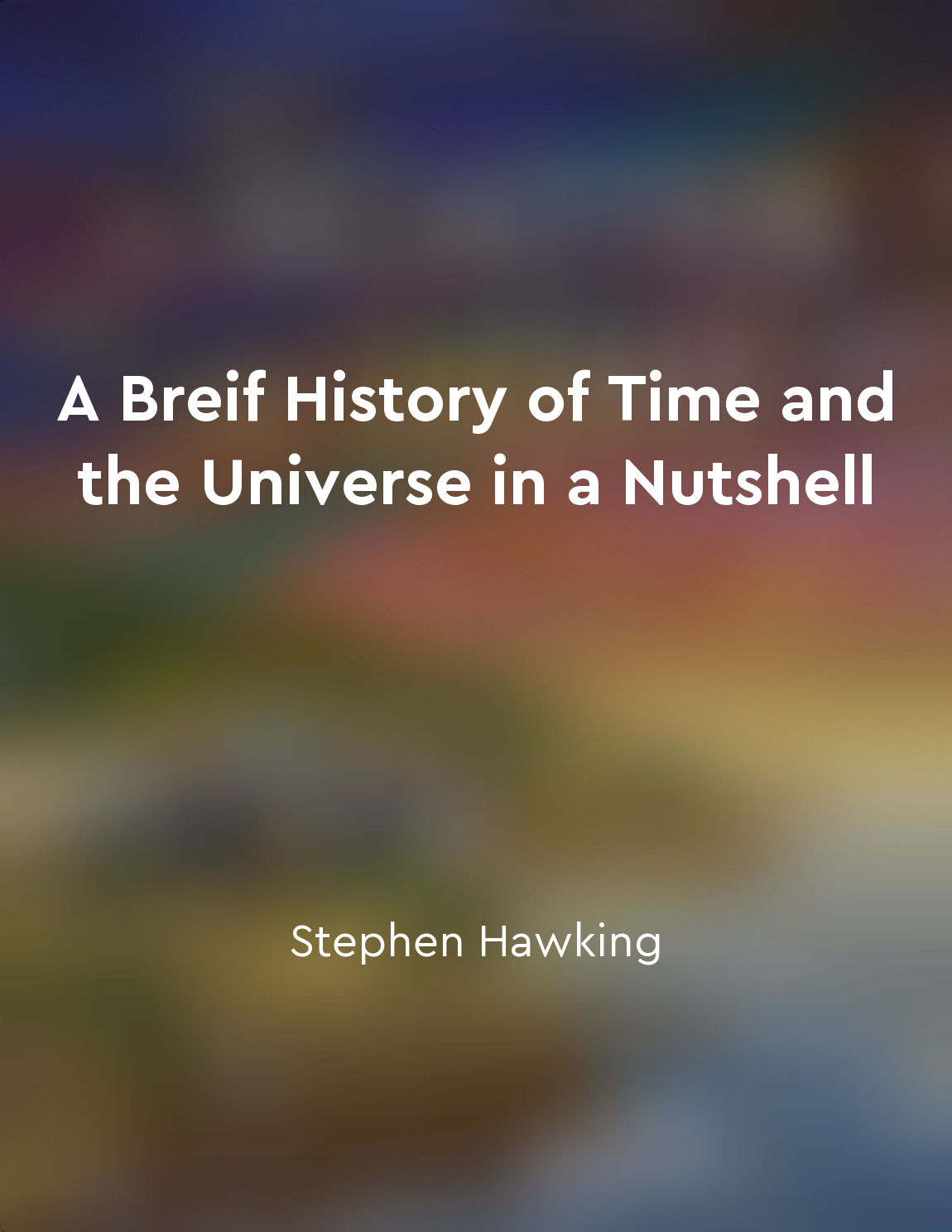Spacetime continuum warped by mass from "summary" of A Breif History of Time and the Universe in a Nutshell by Stephen Hawking
The idea that mass can warp the fabric of spacetime is a central concept in understanding the nature of our universe. According to Einstein's theory of general relativity, massive objects like planets and stars create a gravitational field around them, causing spacetime to curve in their vicinity. This means that the presence of mass not only affects objects that are nearby but also influences the very structure of the space around them. Imagine spacetime as a rubber sheet, with mass placed on it creating a depression in the sheet. This curvature represents how mass warps spacetime, causing objects to follow curved paths around massive bodies. In this way, the motion of planets in their orbits around the sun is not due to a mysterious force acting at a distance, but rather the result of the planets following the curved paths created by the sun's mass. The warping of spacetime by mass also has profound implications for the behavior of light. According to general relativity, light follows the curvature of spacetime, which means that it can be bent by the gravitational field of massive objects. This phenomenon, known as gravitational lensing, has been observed in the bending of light around galaxies and clusters of galaxies, providing direct evidence of the warping of spacetime by mass. In addition to affecting the motion of objects and the path of light, the warping of spacetime by mass also plays a crucial role in the concept of black holes. When a massive star exhausts its nuclear fuel and collapses under its own gravity, it can create a region of spacetime so heavily warped that not even light can escape from it. This boundary is known as the event horizon of a black hole, marking the point of no return beyond which nothing can escape the gravitational pull of the black hole.- The idea of mass warping the spacetime continuum is a fundamental concept that lies at the heart of our understanding of gravity and the structure of the universe. It reveals the intimate connection between mass and spacetime, showing how the presence of mass can shape the very fabric of reality in profound and fascinating ways.
Similar Posts
Einstein's theories challenged traditional notions of time and space
Einstein's theories revolutionized the way we think about time and space. He upended traditional beliefs that had been held for...
Particles exist in multiple states until observed
In the strange world of quantum mechanics, particles can exist in a curious state of limbo, where they seem to be in multiple s...
Time's arrow points in the direction of increasing entropy
The concept of time's arrow pointing in the direction of increasing entropy is a fundamental aspect of the way we experience th...

The Milky Way is constantly in motion through space
The Milky Way, our home galaxy, is not a static entity floating in the vastness of space. It is in fact in constant motion, mov...
Emergence is a key concept in understanding the complexity of reality
The world is not a collection of independent objects, but rather a network of relations between these objects. When we look clo...
Dark energy pushes galaxies apart
Dark energy is a mysterious force that appears to be driving the accelerated expansion of the universe. It is not like any form...
The laws of physics govern the behavior of the universe
The universe is a vast and complex place, filled with countless stars, planets, and galaxies. Despite its immense size, the beh...


